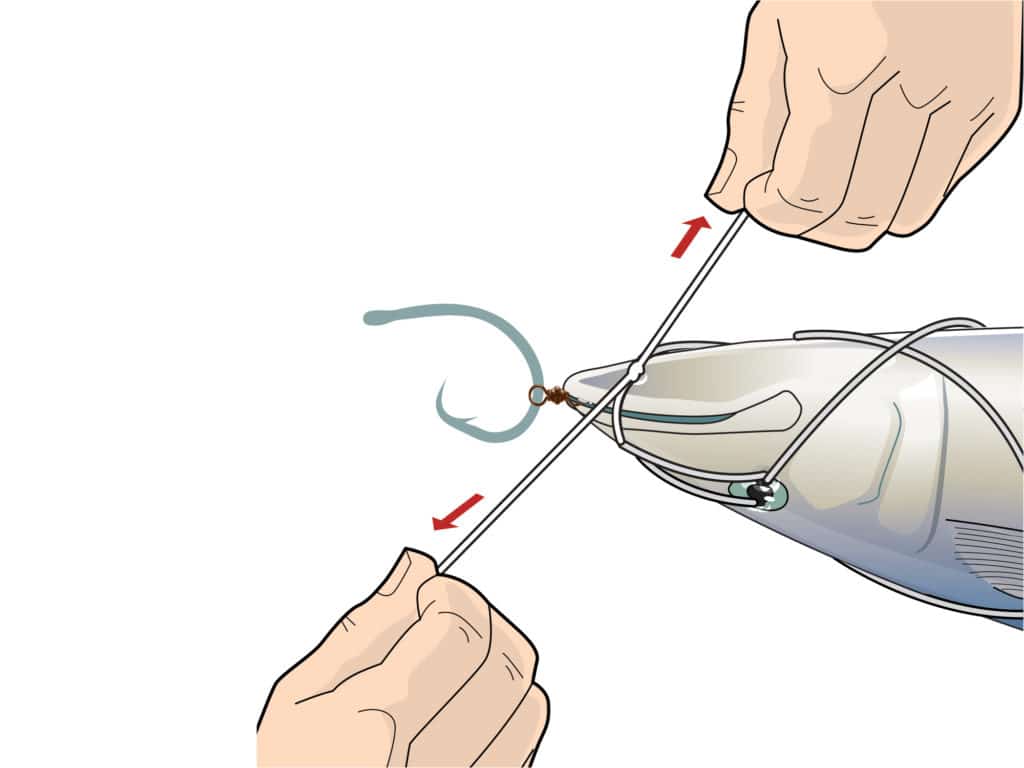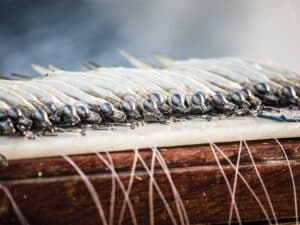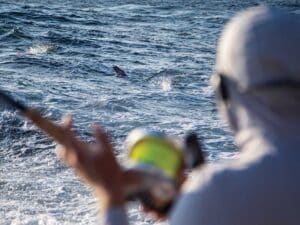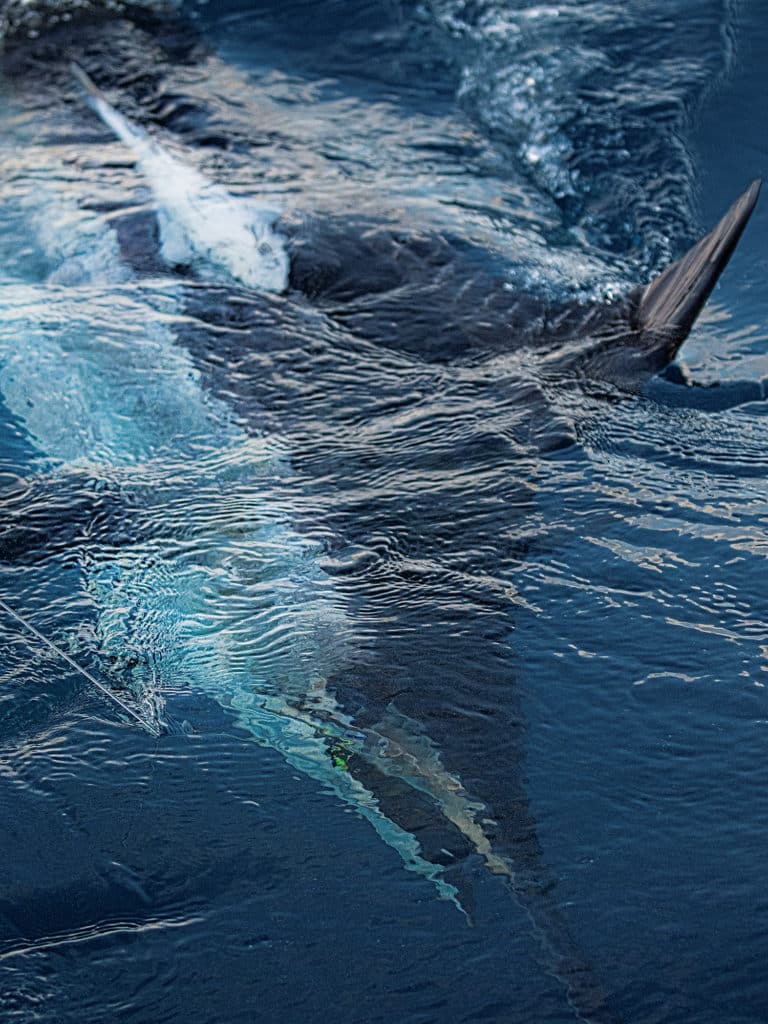
I was fishing off Venezuela in the late 1990s when a local mate showed me a hot dog — yes, a hot dog that you’d eat — that he had rigged with a Mustad live-bait hook. Shortly thereafter, he said, “Watch this,” and pitched the hot dog to the next billfish that came up in the spread. He proceeded to catch the fish on the most beautifully rigged hot dog I’d ever seen. It’s OK to have a little fun when you’re getting 20 to 30 bites a day, but you want to have the highest hookup and catch percentage you possibly can. To do that, you need a solid pitch bait.
Bigger Baits
One of the first things you must do is match your bait to the target species. A medium ballyhoo is typically sufficient when pitching to sailfish or white marlin. However, you need to have a bigger bait, like a Spanish mackerel, when targeting blue marlin. These much bigger fish have a tendency to push a lot of water as they charge a bait, which can actually push a small ballyhoo away and cause a pitch bait to slide right past the fish’s mouth and miss the bite. Obviously, fish don’t have hands to push food deeper into their throats, so they use the force of the water to push bait deeper after the initial bite. Larger baits, such as mackerel or small bonito, have a tendency to get pushed deeper into the fish’s throat because of their larger bodies. This is where a circle hook comes into play.
Tackle Strategy
It’s no secret that one of the reasons to use a circle hook is to hook a blue marlin in the corner of its jaw. These hooks are effective because you actually want the marlin to swallow the entire bait before the hook gets slowly pulled into the corner of its mouth. However, the amount of pressure against the fish must be kept to a minimum after it eats the pitch bait and begins to move away from the boat so that it has time to swallow the mackerel. One of the most important factors in reducing the pressure on the fish is to look at the size of your leader — I always try to use 150- to 200-pound-test.
However, people often overlook the importance of a soft leader: A fish will not feel a soft leader nearly as much after it has eaten the bait.
I’m really not concerned about the need to use fluorocarbon, especially because we are pitching to an aggressive fish that we’ve just pulled off one of the teasers.
When it comes to hook position on a Spanish mackerel pitch bait, I like to position the hook just forward of the bait at approximately the length of a swivel. This allows the circle hook to move freely so it can find the corner of the fish’s jaw once the bait begins to turn and starts to come out of the marlin’s mouth.
Perfect Stitches
An extremely important part of this whole technique is to stitch the mackerel in a crisscross fashion throughout the entire body and then tie it to the swivel used to connect it to the circle hook. The stitches through the body make the bait more durable and hold the bait together in the event the blue marlin has the bait T-boned in its mouth, but the hook is still outside the mouth when you engage the drag and try to come tight. If the hook is outside the mouth, the angler will pull the bait away from the fish; because the stitching holds the mackerel’s head and body together, you will hopefully be able to get a second bite out of the marlin.
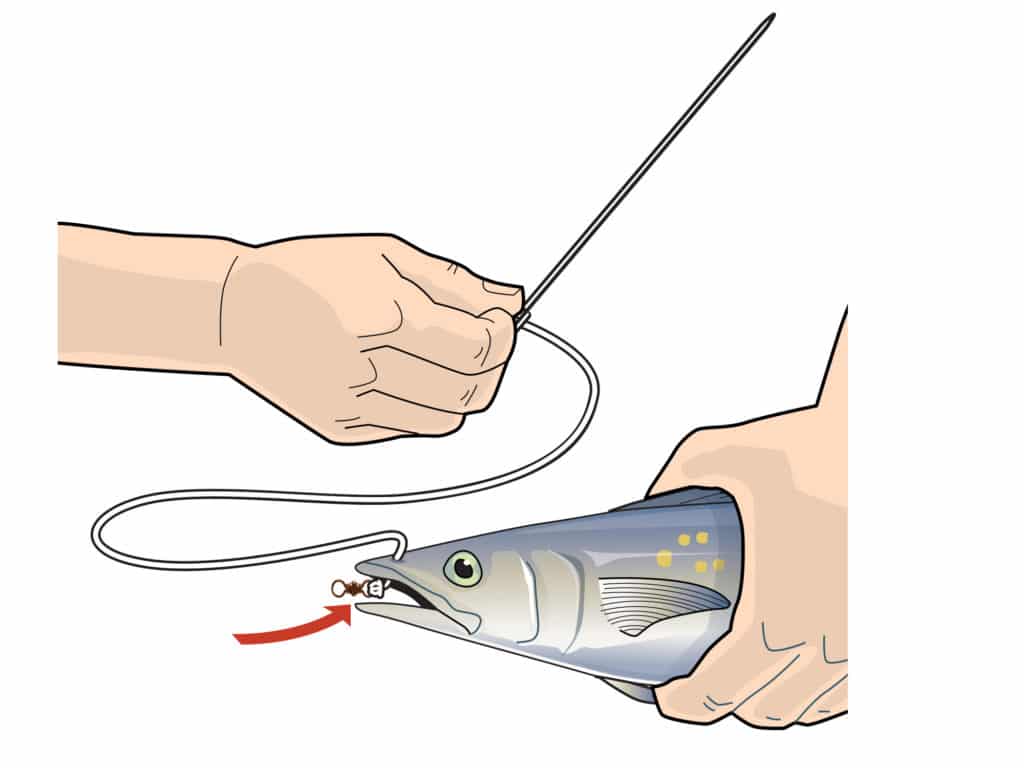
Step One
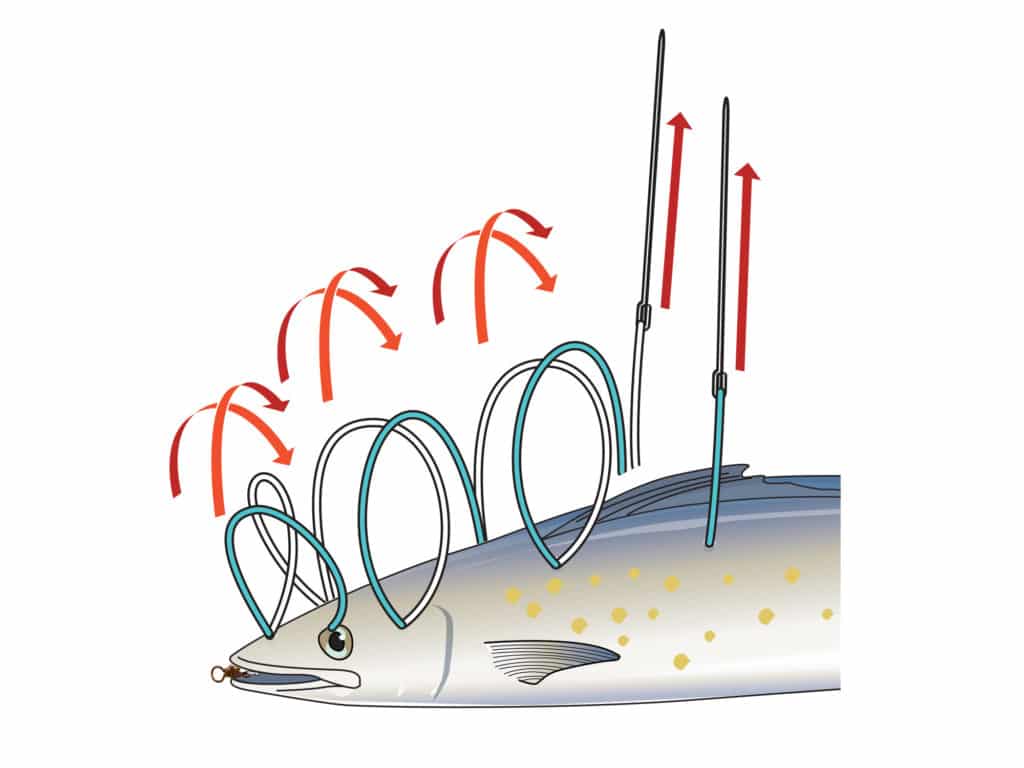
Step Two
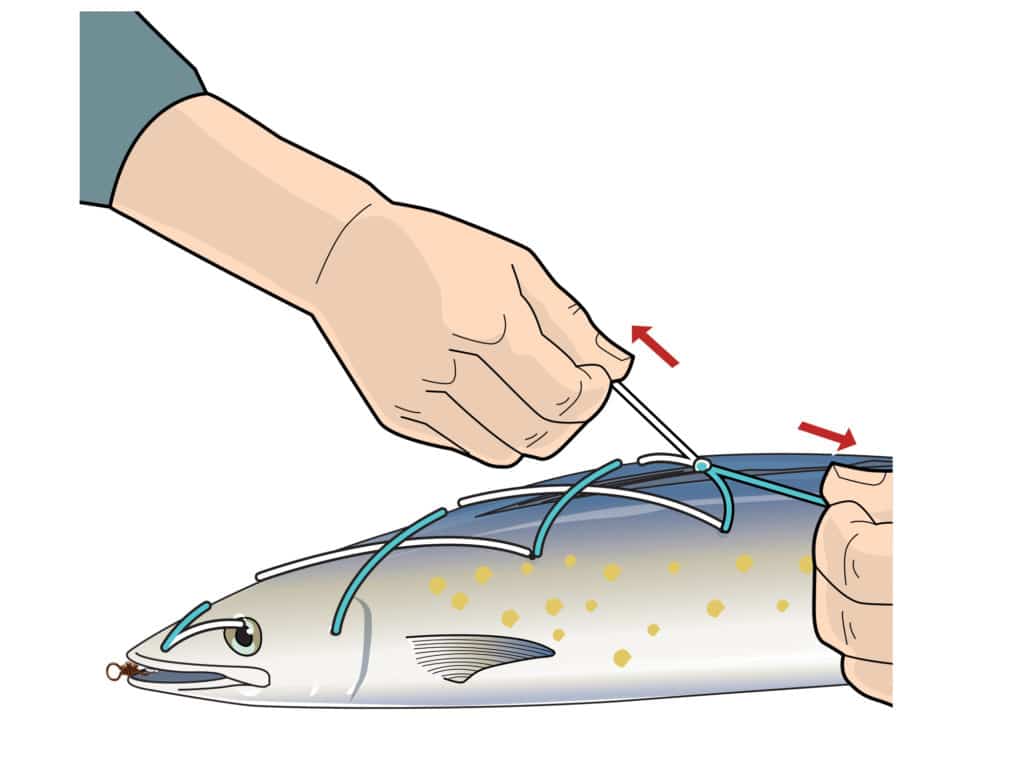
Step Three
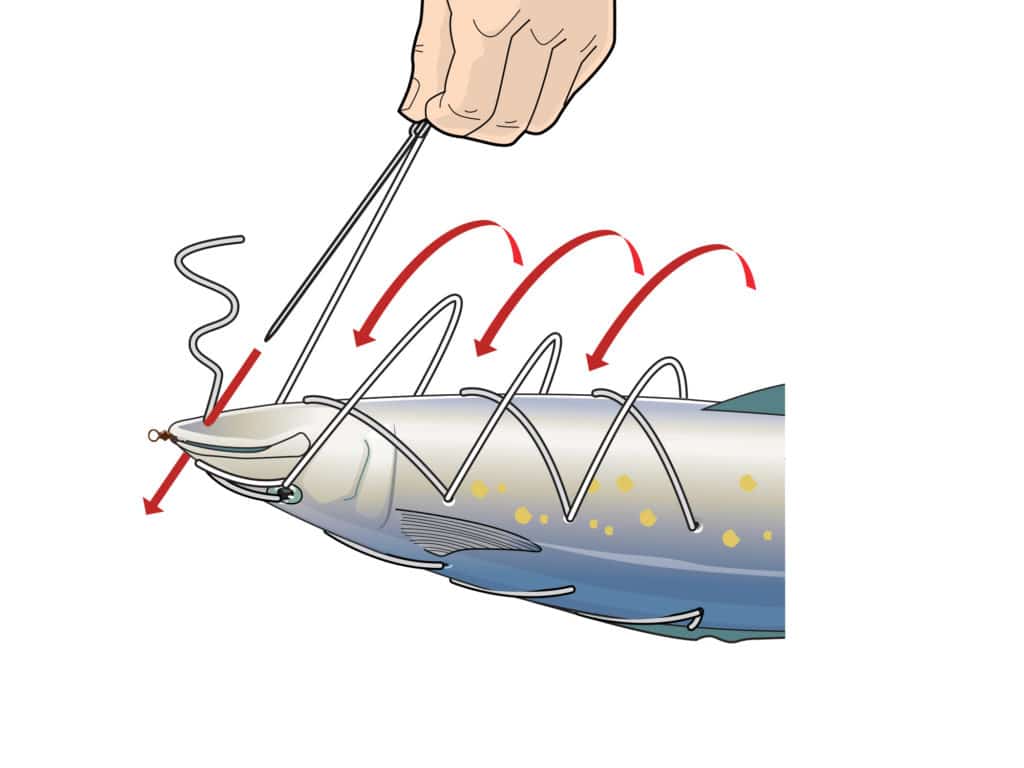
Step Four
